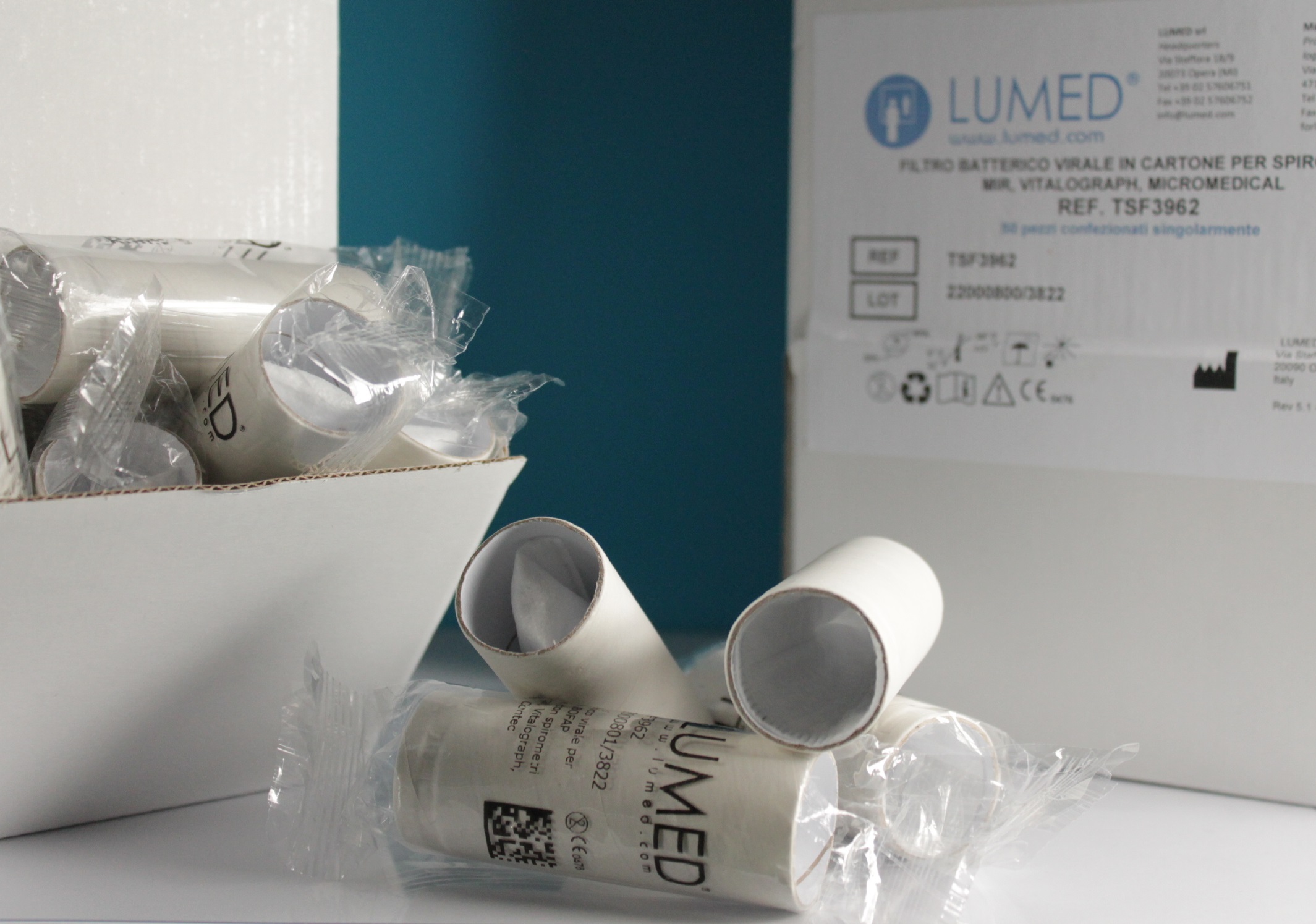
BOFAP, description and peculiarities of the product
DESCRIPTION AND PECULIARITIES OF THE PRODUCT
The BoFAP filter for the study of pulmonary function has been designed and patented by LUMED srl in order to avoid cross-contamination between patients during spirometric tests.
BoFAP combines the ease of disposal, transport and environmental sustainability of simple EUROSPIRO cardboard mouthpieces with the safety features of VB filters. In fact, BoFAP fully complies with the international guidelines both in terms of microbiological and flow resistance and has the same peculiarities of the bacterial-viral filter widely used for the execution of the spirometric examination. All stages of production of this innovative mouthpiece working as a filter take place entirely at the LUMED plant, from the first stages of construction to the final packaging, and are the result of a long and complex project, It involved the participation of many partners of high professional competence
Environmental sustainability and patient and operator safety
It is estimated that in Italy over 6 million spirometric tests are performed in a year. Because of the pandemic has greatly increased the use of viral bacterial filters as a strictly disposable device for the containment of the spread of the infection resulting from the performance of unspeakable spirometric examinations due to their proven effectiveness of microbial barrier.
With the pandemic, however, plastic waste produced in a medical environment and therefore more difficult to dispose of has also increased overall. This is why a consumption material for spirometric use such as BoFAP that combines the effectiveness of the antibacterial filter and the environmental sustainability of the mouthpiece represents a great innovation as a method to ensure the correct filtering efficiency of pathogens, but also to break down the amount of waste in the form of plastics.
Reduction of transport costs
Another great advantage of BoFAP is the significant reduction in transport costs. Its weight and volume compared to a classic AVB filter are 80% lower resulting in a reduction of more than 50% in transport costs and pollution.


